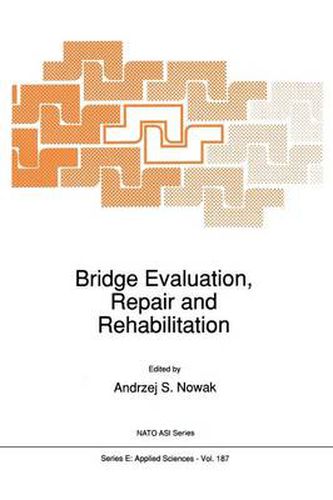Readings Newsletter
Become a Readings Member to make your shopping experience even easier.
Sign in or sign up for free!
You’re not far away from qualifying for FREE standard shipping within Australia
You’ve qualified for FREE standard shipping within Australia
The cart is loading…






This title is printed to order. This book may have been self-published. If so, we cannot guarantee the quality of the content. In the main most books will have gone through the editing process however some may not. We therefore suggest that you be aware of this before ordering this book. If in doubt check either the author or publisher’s details as we are unable to accept any returns unless they are faulty. Please contact us if you have any questions.
Evaluation, repair and rehabilitation of bridges are increasingly important topics in the effort to deal with the deteriorating infrastructure. For example, in the United States about 40 percent of the nation’s 570,000 bridges are classified, according to the Federal Highway Administra tion’s (FHW A) criteria, as deficient and in need of rehabilitation and replacement. In other countries the situation is similar. FHW A estimates the cost of a bridge replacement and reha bilitation program at 50 billion dollars. The major factors that have contributed to the present situation are: the age, inadequate maintenance, increasing load spectra and environmental contamination. The deficient bridges are posted, repaired or replaced. The disposition of bridges involves clear economical and safety implications. To avoid high costs of replacement or repair, the evaluation must accurately reveal the present load carrying capacity of the struc ture and predict loads and any further changes in the capacity (deterioration) in the applicable time span. Accuracy of bridge evaluation can be improved by using the recent developments in bridge diagnostics, structural tests, material tests, structural analysis and probabilistic methods. There is a need for an international exchange of advanced experience to increase the research effi ciency. The Workshop is organized on the premise that the exchange of existing American and European experience in the area of bridge evaluation, repair and rehabilitation is beneficial for both parties involved.
$9.00 standard shipping within Australia
FREE standard shipping within Australia for orders over $100.00
Express & International shipping calculated at checkout
This title is printed to order. This book may have been self-published. If so, we cannot guarantee the quality of the content. In the main most books will have gone through the editing process however some may not. We therefore suggest that you be aware of this before ordering this book. If in doubt check either the author or publisher’s details as we are unable to accept any returns unless they are faulty. Please contact us if you have any questions.
Evaluation, repair and rehabilitation of bridges are increasingly important topics in the effort to deal with the deteriorating infrastructure. For example, in the United States about 40 percent of the nation’s 570,000 bridges are classified, according to the Federal Highway Administra tion’s (FHW A) criteria, as deficient and in need of rehabilitation and replacement. In other countries the situation is similar. FHW A estimates the cost of a bridge replacement and reha bilitation program at 50 billion dollars. The major factors that have contributed to the present situation are: the age, inadequate maintenance, increasing load spectra and environmental contamination. The deficient bridges are posted, repaired or replaced. The disposition of bridges involves clear economical and safety implications. To avoid high costs of replacement or repair, the evaluation must accurately reveal the present load carrying capacity of the struc ture and predict loads and any further changes in the capacity (deterioration) in the applicable time span. Accuracy of bridge evaluation can be improved by using the recent developments in bridge diagnostics, structural tests, material tests, structural analysis and probabilistic methods. There is a need for an international exchange of advanced experience to increase the research effi ciency. The Workshop is organized on the premise that the exchange of existing American and European experience in the area of bridge evaluation, repair and rehabilitation is beneficial for both parties involved.